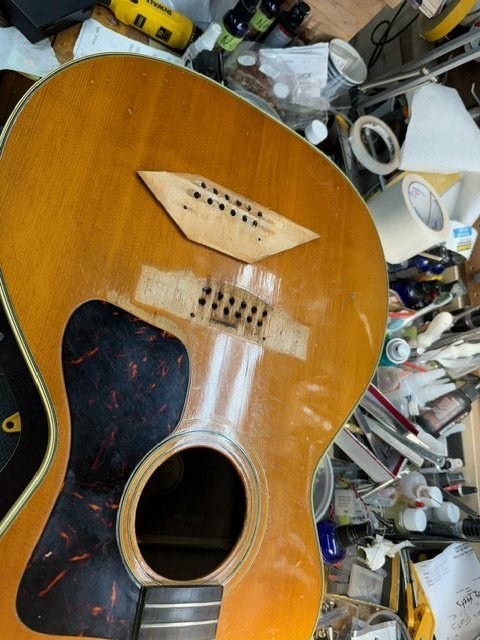Hi zzwerzy,
For repairs such as this, it is common for luthiers to compare Guilds to Martins, as both brands' instruments were primarily constructed with animal protein glue. I have jokingly stated that some Martins I have encountered are seemingly built with such a minimal amount of glue, it is as though you could simply breathe a warm sigh across a given wooden component and the glue would release. I have never experienced this with a Guild guitar. By contrast, many Guilds have been built using copious amounts of glue, complicating any repair efforts, and doing nothing to mitigate the industry-wide reputation that “Guilds are harder to work on.”
For the record: All hide glue is not created equal. I can only speculate, as I do *not* have definitive proof (I wasn’t there), but my guitar assembly and disassembly experience leads me to reason that many (most?) of the Guild guitars I have ever encountered used a hide glue having a higher bond strength than did many (most?) competing brands of the same era. This simple fact alone can explain why many Guild repair experiences are seemingly more difficult.
Luthiers familiar with Martin guitar repairs are often expecting that a minimal application of heat applied directly to the bridgeplate is sufficient for its removal with zero or minimal tearout (yes, it is really does occur and yes, it is a beautiful thing to behold). I have never experienced this to be the case with a Guild guitar. Additional heat must be applied over additional time (and potentially, with judicious use of moisture). And yes, that means there is additional concern for the loosening of the bonds of every part in proximity: bridge to soundboard, soundboard plate to plate, the X brace and even the closest tonebar. It is a reality and if you prepare for it, you can deal with it.
That is not to say that all Guild guitars are somehow “nightmares” to repair. That is not the case. But they do tend to require a different approach.
